Thermite at Sandy Hook High School
Thermite is a very energetic chemical reaction between iron oxide and aluminum.
The pictures below give some idea of the process and results.
About 100 grams of powdered aluminum was mixed with about 300 grams of iron oxide.
The mixture was put in a nest of flower pots placed in a stand so that it was suspended above a tub of sand.
A frying pan was fastened to the stand so that the reaction product would pour out of the pots and into the pan.
A computer hard drive was placed on the pan to demonstrate how thermite can be used to ensure the destruction of sensitive data.
This might be used if you were in a military outpost and had to leave
quickly with no time to pack up everything and take it with you.
Some computers that are to be used in those locations have thermite preplaced in them.
It only has to be ignited as you leave to be sure that classified data or cryptographic codes don't fall into enemy hands.
It is a lot safer than explosives if you are still nearby when it goes off.

A small butane torch isn't hot enough to ignite the mix directly so a
"fuse" consisting of a strip of magnesium or in this case a sparkler is
used.
The reaction starts off relatively slowly. Relative, that is, to the reaction a few seconds later.
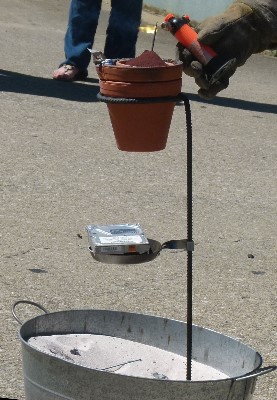
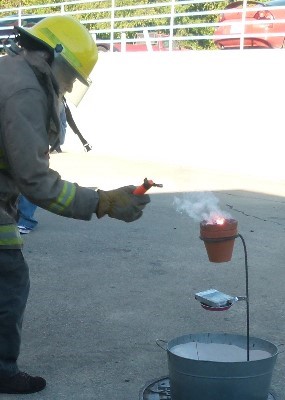
In order to react a little of the aluminum has to melt at 1,221° F
(660.3° C). That lets the iron oxide dissolve in it so that the
two chemicals are in very close contact.
The aluminum has a much greater affinity for oxygen than the iron does so it grabs the oxygen releasing heat.
The aluminum is oxidized and the iron reduced if you want a more technical way of saying the same thing.

That heat is enough to melt more of the aluminum so the reaction speeds
up melting more aluminum causing the reaction to go even faster.
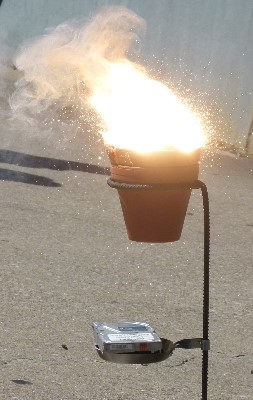
The iron oxide has now been reduced to metallic iron at about 4500° F
(2500° C) well above it's melting point 2,795° F (1,535° C).
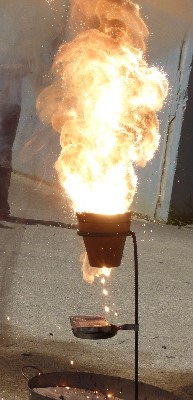
The iron pours out through the hole in the bottom of the pots and onto the disk drive.
Circuit boards and many of the other flammable components of the drive burst into flame.
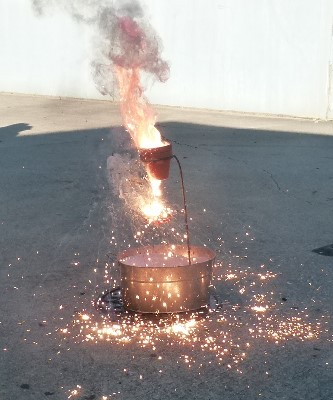
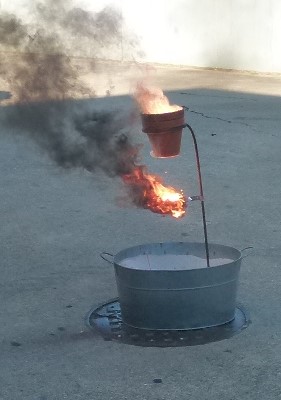
A few seconds later the reaction is complete.

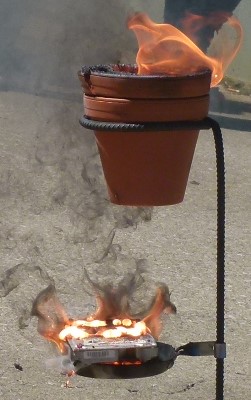
Our first close up look at the result, still way too hot to handle.


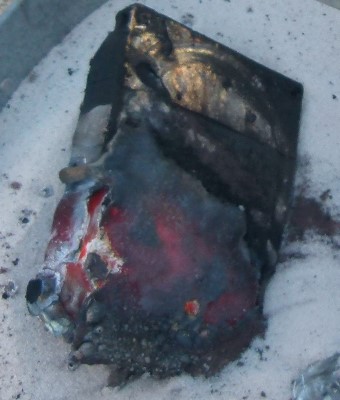
When things cool down we could examine them more closely.
No one is going to be able to recover the data on that drive.
One of the chips was on the bottom of the drive and wasn't destroyed.
Lumps of iron are on the drive and in the pan.
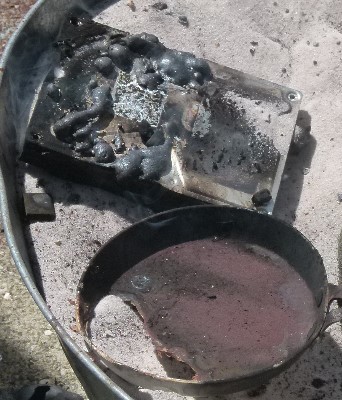
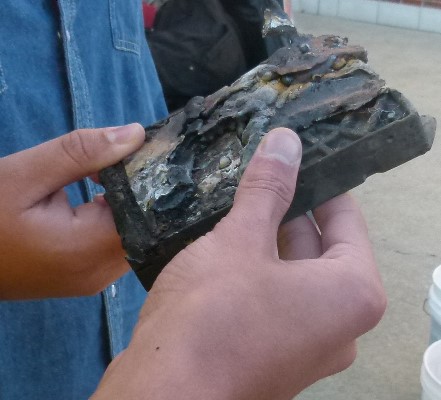

Aluminum pans sometimes melt through.
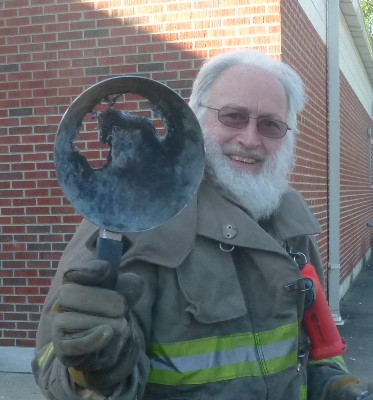
This is a lump of iron that ended up in the sand.
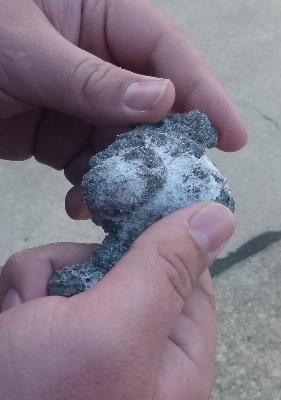
I hope that you enjoyed our thermite experiment.
Please be very careful if you decide to try this.
Thermite is also used for welding rail road tracks and other large pieces of iron.
It has been used to destroy large guns that have been captured by
welding the breech closed or making lumps of iron in the barrel.
A similar reaction using coper oxide is sometimes used for joining heavy copper conductors.
Go to our Science Fun
page
Go to our Travels page
Go to our Personal home
page
Go to our Community page
E-mail Nancy and Alan

www.mrtc.com/anvk web site by Alan Kuehner is licensed under a Creative Commons Attribution-Noncommercial-Share Alike 3.0 United States License.
Permissions beyond the scope of this license may be available at http://members.mrtc.com/anvk/permit.html.
